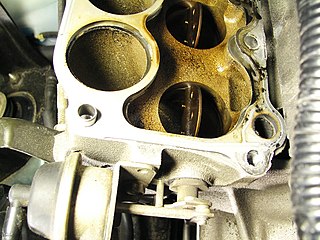
In internal combustion engines, a variable-length intake manifold (VLIM),variable intake manifold (VIM), or variable intake system (VIS) is an automobile internal combustion engine manifold technology. As the name implies, VLIM/VIM/VIS can vary the length of the intake tract in order to optimise power and torque across the range of engine speed operation, as well as to help provide better fuel efficiency. This effect is often achieved by having two separate intake ports, each controlled by a valve, that open two different manifolds – one with a short path that operates at full engine load, and another with a significantly longer path that operates at lower load. The first patent issued for a variable length intake manifold was published in 1958, US Patent US2835235 by Daimler Benz AG.

In internal combustion engines, variable valve timing (VVT) is the process of altering the timing of a valve lift event, and is often used to improve performance, fuel economy or emissions. It is increasingly being used in combination with variable valve lift systems. There are many ways in which this can be achieved, ranging from mechanical devices to electro-hydraulic and camless systems. Increasingly strict emissions regulations are causing many automotive manufacturers to use VVT systems.
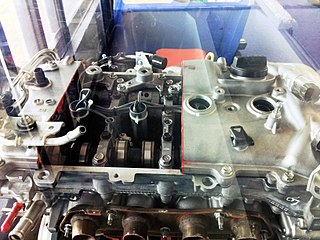
VVT-i, or Variable Valve Timing with intelligence, is an automobile variable valve timing technology developed by Toyota. It was first introduced in 1995 with the 2JZ-GE engine found in the JZS155 Toyota Crown and Crown Majesta.

The Toyota A Series engines are a family of inline-four internal combustion engines with displacement from 1.3 L to 1.8 L produced by Toyota Motor Corporation. The series has cast iron engine blocks and aluminum cylinder heads. To make the engine as short as possible, the cylinders are siamesed.
Toyota Variable Induction System, or T-VIS, is a variable intake system designed by Toyota to improve the low-end performance of multi-valve engines.
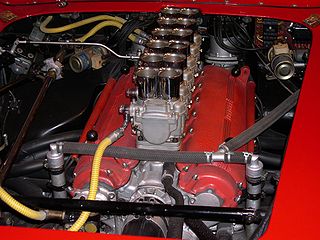
In automotive engineering, an inlet manifold or intake manifold is the part of an engine that supplies the fuel/air mixture to the cylinders. The word manifold comes from the Old English word manigfeald and refers to the multiplying of one (pipe) into many.

The Toyota JZ engine family is a series of inline-6 automobile engines produced by Toyota Motor Corporation. As a replacement for the M-series inline-6 engines, the JZ engines were 24-valve DOHC engines in 2.5- and 3.0-litre versions.

The Toyota ZZ engine family is a straight-4 piston engine series. The ZZ series uses a die-cast aluminium engine block with thin press-fit cast iron cylinder liners, and aluminium DOHC 4-valve cylinder heads. The camshafts are chain-driven. The two 1.8 L members of the family, the 1ZZ and 2ZZ, use different bore and stroke. The former was optimised for economy, with torque emphasised in lower revolutions per minute operating range, while the latter is a "square" design optimised for high-RPM torque, yielding higher peak power. The ZZ family replaced the extremely popular cast-iron block 4A engines.

The Toyota MZ engine family is a piston V6 engine series. The MZ series has an aluminium engine block and aluminium alloy DOHC cylinder heads. The cylinders are lined with cast iron, and is of a closed deck design. The engine is a 60 degree V6 design. It uses multi-port fuel injection (MFI), four valves per cylinder, a one-piece cast camshaft and a cast aluminium intake manifold. The MZ family is a lightweight V6 engine of an all-aluminium design, using lighter weight parts than the heavier duty VZ block engines in an effort to lower production costs, decrease engine weight, and decrease reciprocating weight without sacrificing reliability. Toyota sought to enhance the drivability pattern of the engine at exactly 3000 rpm, since that was the typical engine speed for motors cruising on the highway. The result was less cylinder distortion coupled with the decreased weight of rotating assemblies, smoother operation at that engine speed, and increased engine efficiency.
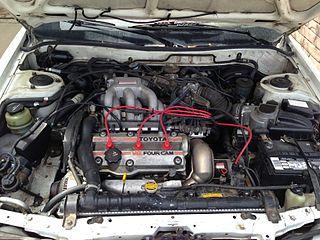
The Toyota VZ engine family is a series of V6 gasoline piston engines ranging from 2.0 to 3.4 L in displacement and both SOHC and DOHC configurations. It was Toyota's first V6 engine, being made as a response to Nissan’s VG engine, one of Japan’s first mass-produced V6 engines.

The Toyota UZ engine family is a gasoline fueled 32-valve quad-camshaft V8 piston engine series used in Toyota's luxury offerings and sport utility vehicles. Three variants have been produced: the 1UZ-FE, 2UZ-FE, and 3UZ-FE. Production spanned 24 years, from 1989 to mid 2013, ending with the final production of the 3UZ-FE-powered Toyota Crown Majesta I-FOUR. Toyota's UZ engine family was replaced by the UR engine family.
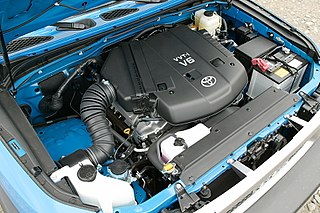
The Toyota GR engine family is a gasoline, open-deck, piston V6 engine series. The GR series has a 60° die-cast aluminium block and aluminium DOHC cylinder heads. This engine series also features 4 valves per cylinder, forged steel connecting rods and crankshaft, one-piece cast camshafts, a timing chain, and a cast aluminium lower intake manifold. Some variants use multi-port fuel injection, some have D4 direct injection, and others have a combination of direct injection and multi-port fuel injection or D4-S.
Manifold vacuum, or engine vacuum in an internal combustion engine is the difference in air pressure between the engine's intake manifold and Earth's atmosphere.
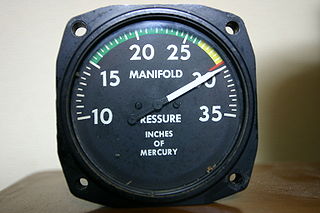
The manifold absolute pressure sensor is one of the sensors used in an internal combustion engine's electronic control system.
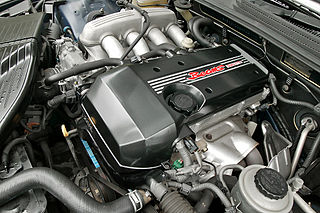
The Toyota S Series engines are a family of straight-4 petrol or CNG engines with displacement from 1.8 L to 2.2 L produced by Toyota Motor Corporation from January 1980 to August 2007. The series has cast iron engine blocks and aluminium cylinder heads.

The Proton CamPro engine is the first flagship automotive engine developed together with Lotus by the Malaysian automobile manufacturer, Proton.

The Toyota E engine family is a straight-four piston engine series, and uses timing belts rather than chains. The E engines were the first multi-valve engines from Toyota designed with economy, practicality and everyday use in mind. Like many other Toyota engines from the era, the E engine series features a cast iron block, along with an aluminium cylinder head. E engines are lighter than earlier Toyota engines, due to the hollow crankshaft, thinned casting of the cylinder block, and several other reductions in auxiliaries as well as in the engine itself. Carbureted versions include a newly designed, variable-venturi carburetor. All of these changes improved economy and emissions. The members of the E engine family, range from 1.0 L to 1.5 L. The E family supplanted the K engines in most applications. A large number of parts in the E engine series are interchangeable between each other.
A throttle is the mechanism by which fluid flow is managed by constriction or obstruction.
The VR5 engines are a family of petroleum fuelled Internal combustion engines developed by the Volkswagen Group and produced from 1997 to 2006. They are derived from the VR6 engine family, also developed by Volkswagen, but with one less cylinder. The VR5 is a highly compact, thanks to the narrower angle of 15° and a displacement of 2,324 cc. The VR5 was the first production block to use five cylinders in a VR design with a 15-degree angle.
Variable valve lift (VVL) is an automotive piston engine technology which varies the height a valve opens in order to improve performance, fuel economy or emissions. There are two main types of VVL: discrete, which employs fixed valve lift amounts, and continuous, which is able to vary the amount of lift. Continuous valve lift systems typically allow for the elimination of the throttle valve.















